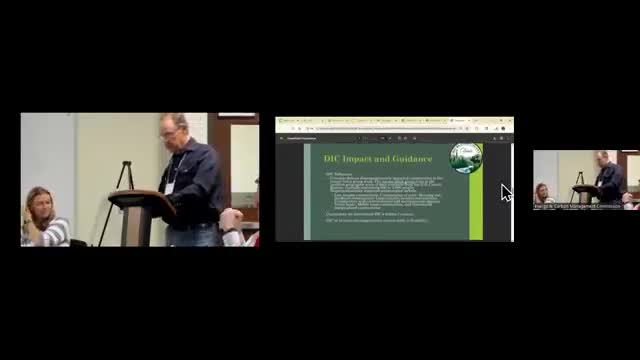Rio Blanco County debates DIC designations amid EnviroScreen scrutiny
June 18, 2025 | Department of Personnel & Administration, State Agencies, Organizations, Executive, Colorado
This article was created by AI summarizing key points discussed. AI makes mistakes, so for full details and context, please refer to the video of the full meeting. Please report any errors so we can fix them. Report an error »

The Colorado Produced Water Consortium convened on June 18, 2025, to address critical issues surrounding the management of produced water and the implications of recent regulatory changes. The meeting focused on the definitions and designations of Disadvantaged Impact Communities (DICs) and the challenges posed by the EnviroScreen tool, which assesses environmental vulnerabilities.
The discussion began with an overview of the DIC designations, which are influenced by census data and environmental factors. It was noted that Rio Blanco County has seen a shift in its DIC status, with only three mobile home parks remaining designated as such. In contrast, Grand Blanca County has multiple DICs, attributed to the EnviroScreen rather than population density.
Concerns were raised about the potential for future revisions to the DIC designations, which could lead to inconsistencies that complicate operations for local governments and oil and gas operators. The meeting highlighted the need for a more stable regulatory framework, as the current system creates uncertainty for stakeholders.
Participants emphasized the importance of flexibility in regulations, particularly for rural counties like River Monroe County. They discussed the need for tailored approaches to managing produced water recycling facilities, especially in sparsely populated areas. The conversation underscored that environmental triggers, such as temperature and drought, could influence DIC designations, further complicating the regulatory landscape.
The Environmental Justice Act was referenced, noting that it allows agencies to adapt the application of regulations to better serve vulnerable communities. However, there was a call for the Environmental Commission to exercise its authority more proactively to address these issues.
In conclusion, the meeting underscored the complexities of managing produced water in Colorado, particularly in light of evolving DIC designations and the need for local government involvement. The consortium aims to develop a more consistent and flexible regulatory approach to support both environmental justice and operational sustainability in the oil and gas sector.
The discussion began with an overview of the DIC designations, which are influenced by census data and environmental factors. It was noted that Rio Blanco County has seen a shift in its DIC status, with only three mobile home parks remaining designated as such. In contrast, Grand Blanca County has multiple DICs, attributed to the EnviroScreen rather than population density.
Concerns were raised about the potential for future revisions to the DIC designations, which could lead to inconsistencies that complicate operations for local governments and oil and gas operators. The meeting highlighted the need for a more stable regulatory framework, as the current system creates uncertainty for stakeholders.
Participants emphasized the importance of flexibility in regulations, particularly for rural counties like River Monroe County. They discussed the need for tailored approaches to managing produced water recycling facilities, especially in sparsely populated areas. The conversation underscored that environmental triggers, such as temperature and drought, could influence DIC designations, further complicating the regulatory landscape.
The Environmental Justice Act was referenced, noting that it allows agencies to adapt the application of regulations to better serve vulnerable communities. However, there was a call for the Environmental Commission to exercise its authority more proactively to address these issues.
In conclusion, the meeting underscored the complexities of managing produced water in Colorado, particularly in light of evolving DIC designations and the need for local government involvement. The consortium aims to develop a more consistent and flexible regulatory approach to support both environmental justice and operational sustainability in the oil and gas sector.
View full meeting
This article is based on a recent meeting—watch the full video and explore the complete transcript for deeper insights into the discussion.
View full meeting
